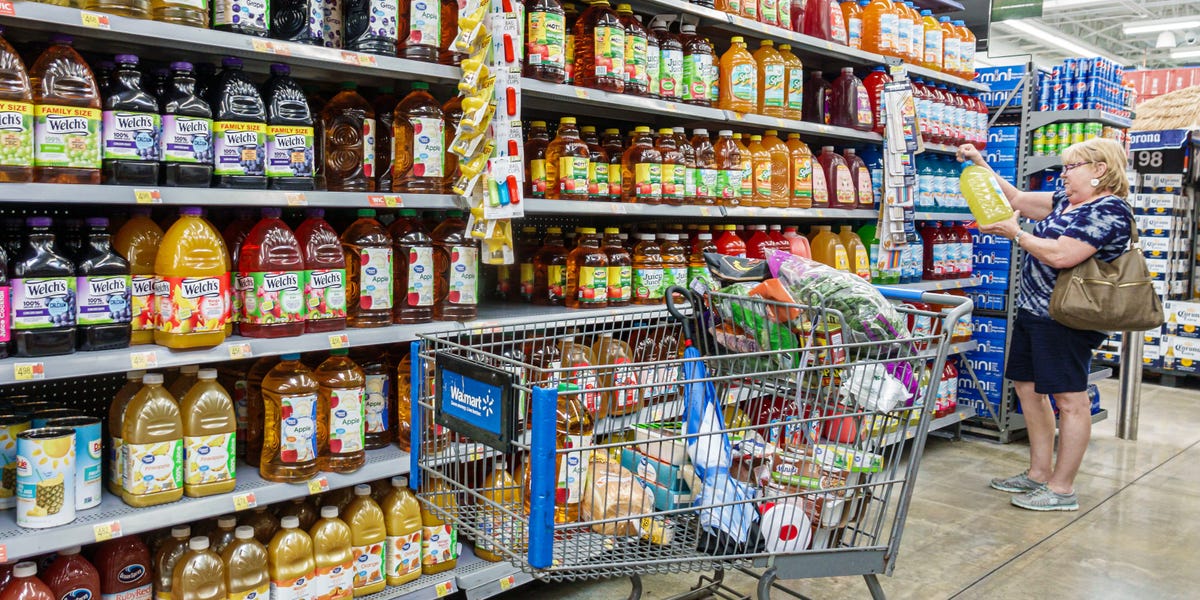- Walmart is the biggest grocery retailer in the US by a long shot.
- The company reported more than $264 billion in US grocery sales last year, continuing its dominance.
- By comparison, Kroger and Albertsons combined sales were about $229 billion.
Walmart is famous for selling just about anything you can think of, but shoppers rely on the retail giant more for groceries than for any other category sold in the company’s 4,600 US stores.
What’s more, more shoppers are getting their groceries from Walmart than from any other retailer, and it’s not even close.
Nearly one in four grocery dollars in the US is spent at Walmart, more than double the share that shoppers spend at Kroger or Costco, according to consumer analytics firm Numerator.
That all adds up to more than $264 billion spent on groceries at Walmart US locations in 2023, up from $247 billion and $219 billion in the preceding two years.
Not only are top-line sales growing, their percentage of total division revenues is ticking up from about 55% three years ago to roughly 60% last year. And these numbers don’t even include Walmart-owned Sam’s Club.
Of course, Walmart has been America’s grocery king for a while now, but the numbers from its most recent annual report filed Friday with the SEC really drive the idea home.
Walmart’s scale is also particularly salient in light of the Federal Trade Commission’s recent lawsuit that seeks to block the merger of the top two pure-play supermarket companies in the US: Kroger and Albertsons.
Kroger, the larger of the two, did approximately $150 billion in total sales last year, while Albertsons has notched a bit more than $79 million in its most recent 12 month period. (The companies’ fiscal years don’t match.)
Taken together, that’s roughly $229 billion, or $35 billion less than Walmart. By comparison Target’s food and beverage revenues last year were about $23.9 billion.
While Kroger’s proposed $24.6 billion acquisition of Albertsons would indeed be the “largest supermarket merger in US history,” as the FTC notes, it still wouldn’t result in Walmart’s dethroning.
However, the FTC’s complaint is less focused on the size of the potential supermarket mega-firm than on the impact the deal would have on competition between the current rivals.
The FTC notes that US shoppers get their groceries from a variety of retail formats that aren’t necessarily direct competitors to supermarkets: warehouse clubs like Costco and Sam’s Club, limited assortment stores like Aldi and Trader Joe’s, premium grocers like Whole Foods, dollar stores like Dollar General and Dollar Tree, and of course e-commerce retailers like Amazon.
Where does Walmart fit into that picture? Well, it’s in a league — and a size — of its own.
Read the full article here





